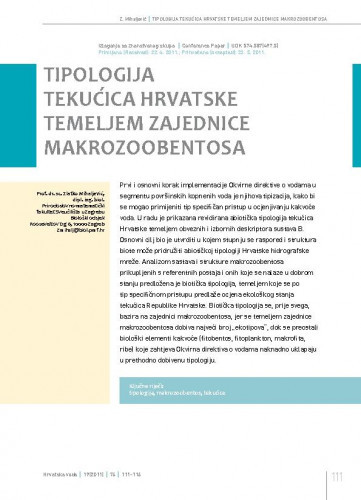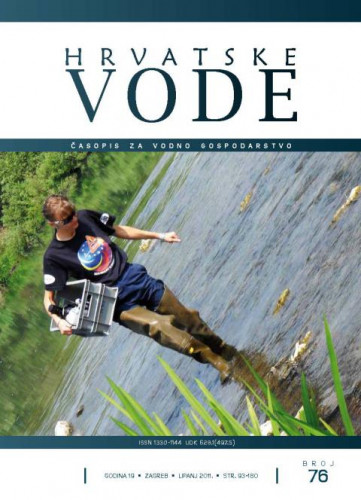Prvi i osnovni korak implementacije Okvirne direktive o vodama u segmentu površinskih kopnenih voda je njihova tipizacija, kako bi se mogao primijeniti tip specifičan pristup u ocjenjivanju kakvoće voda. U radu je prikazana revidirana abiotička tipologija tekućica Hrvatske temeljem obveznih i izbornih deskriptora sustava B. Osnovni cilj bio je utvrditi u kojem stupnju se raspored i struktura biote može pridružiti abiotičkoj tipologiji Hrvatske hidrografke mreže. Analizom sastava i strukture makrozoobentosa prikupljenih s referentnih postaja i onih koje se nalaze u dobrom stanju predložena je biotička tipologija, temeljem koje se po tip specifičnom pristupu predlaže ocjena ekološkog stanja tekućica Republike Hrvatske. Biotička tipologija se prije svega bazira na zajednici makrozoobentosa, jer se temeljem zajednice makrozoobentosa dobiva najveći broj „ekotipova“, dok se preostali biološki elementi kakvoće (fitobentos, fitoplankton, makrofita, ribe) koje zahtjeva Okvirna direktiva o vodama naknadno uklapaju u prethodno dobivenu tipologiju..; The first and basic step in the implementation of the Water Framework Directive in the segment of surface inland waters is their typification, so that a type-specific approach to estimation of water quality could be applied. The paper presents a revised abiotic typology of non-stagnant waters in Croatia based on mandatory and facultative descriptors of System B. The main goal was to determine at which level distribution and structure of biota can be attributed to the abiotic typology of the Croatian hydrographic network. Based on the analysis of the system and structure of macrozoobenthos collected from reference stations and from locations with a good status, a biotic typology was proposed, which in turn served as a basis on which, by application of type specific approach, estimation of ecological status of non-stagnant waters in the Republic of Croatia is proposed. Biotic typology is primarily based on macrozoobenthos community, because in this manner the largest number of “ecotypes” is obtained, while the remaining biological quality elements (phytobenthos, phytoplankton, macrophytes, fish) required by the Water framework Directive are afterwards fit into the previously determined typology.
Sažetak
Dio sveska

